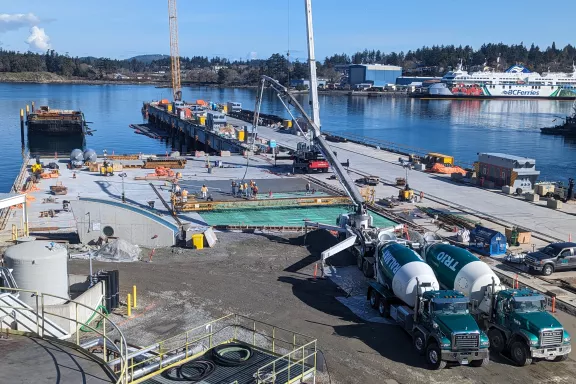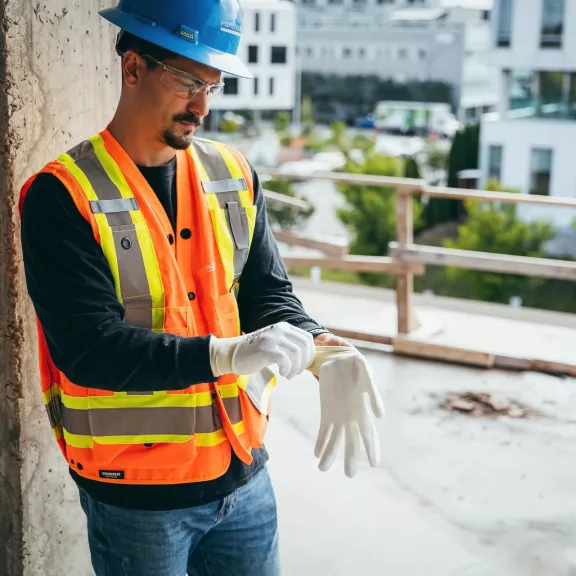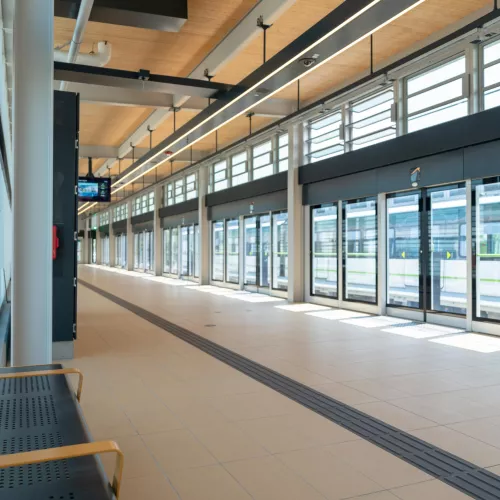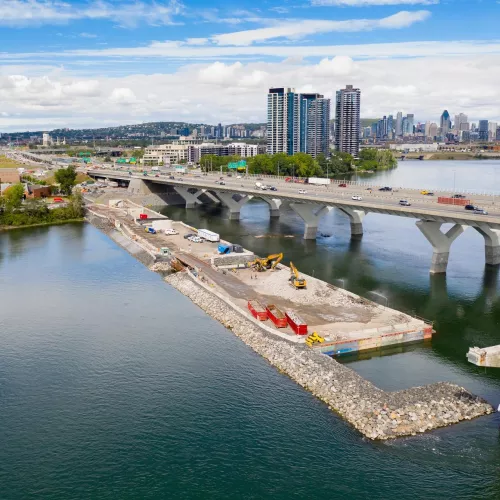

Sometimes, if you want something done right, you must do it yourself. That’s what great teams do. And they do it by working with agility and adaptability and leveraging the wide array of strengths and skills of all their members.
Pomerleau has achieved this level of excellence coast to coast by developing and maintaining its capacity to deliver self-performed work on complex and innovative projects that truly impact Canadian communities.
From Victoria to St-John’s NL, Pomerleau carries out complex projects in deep foundation, marine construction, as well as concrete, earthworks and urban infrastructure. It does so with its own people, its own expertise, its own equipment, and by training its staff as well as its trade partners to use technologies like Building information management (BIM), to optimize work from planning through to post-construction.
Whether it’s caisson, driven or secant piles, combined walls, bridges, wharves, docks, dredging, various complex municipal utilities or other special projects such as an entire light rail transit system, Pomerleau’s ability to deliver using the self-perform model gives it unique, distinctive position in the Canadian market.
We are proud of the projects we can undertake. It’s important to have the tools and the technologies, but what allows us to strive for excellence while working in self-perform mode is most definitely our people’s know-how, their ability to problem solve, and their dedication to the work.
Take for example the company’s ability to perform marine work, both on and under water, which requires innovative approaches and as well as particular considerations for the safety and security of the team involved. Using 3D scans and modelization, as well as BIM, allowed Pomerleau to save time and identify efficiencies while working under water. Recently, the Canadian construction leader used all these technologies to configure all the equipment required for the deconstruction of the old Champlain Bridge over the St. Lawrence River, and to carefully plan all the stages of its demolition.
Using a Kelly-type drill to build a circular watertight retaining wall with 100 secant piles measuring more than 20 meters for the access well of a train station under the Montreal-Trudeau airport is far from simple. The same goes for using a tunnel boring machine under the Fraser River for a wastewater treatment plan outfall. Pomerleau has the team, the equipment and know-how to complete this type of jobs, which are often unseen by the public and yet instrumental to the development of infrastructures that have a major impact on the daily lives of thousands.
The company, which has a long-standing track record of community engagement, recently launched a new corporate engagement policy to guide its next steps as it continues to forge meaningful relationships with local organizations coast-to-coast. Making Canada more sustainable for future generations is one of the tenants of this policy. Pomerleau is also working to transform and make its operations greener and more sustainable. But that’s not all. Pomerleau is also called to protect various ecosystems while performing complex work. Take the Champlain bridge deconstruction project in Montreal as an example. While having 50 to 100 barge movements weekly to demolish a 3.4km-long structure piece by piece and recover 90% of the material. Pomerleau and its partners have focused on protecting the marine natural habitat and managing the quality of the water at every step.
Every project is unique. No matter how, complex or colossal it might be, the variety of expertise and equipment that Pomerleau has allowed it to complete any type of project in a self-performed mode, coast-to-coast, rain or shine. As the construction industry undergoes a technological revolution, this bares the question, what’s next for Pomerleau?

